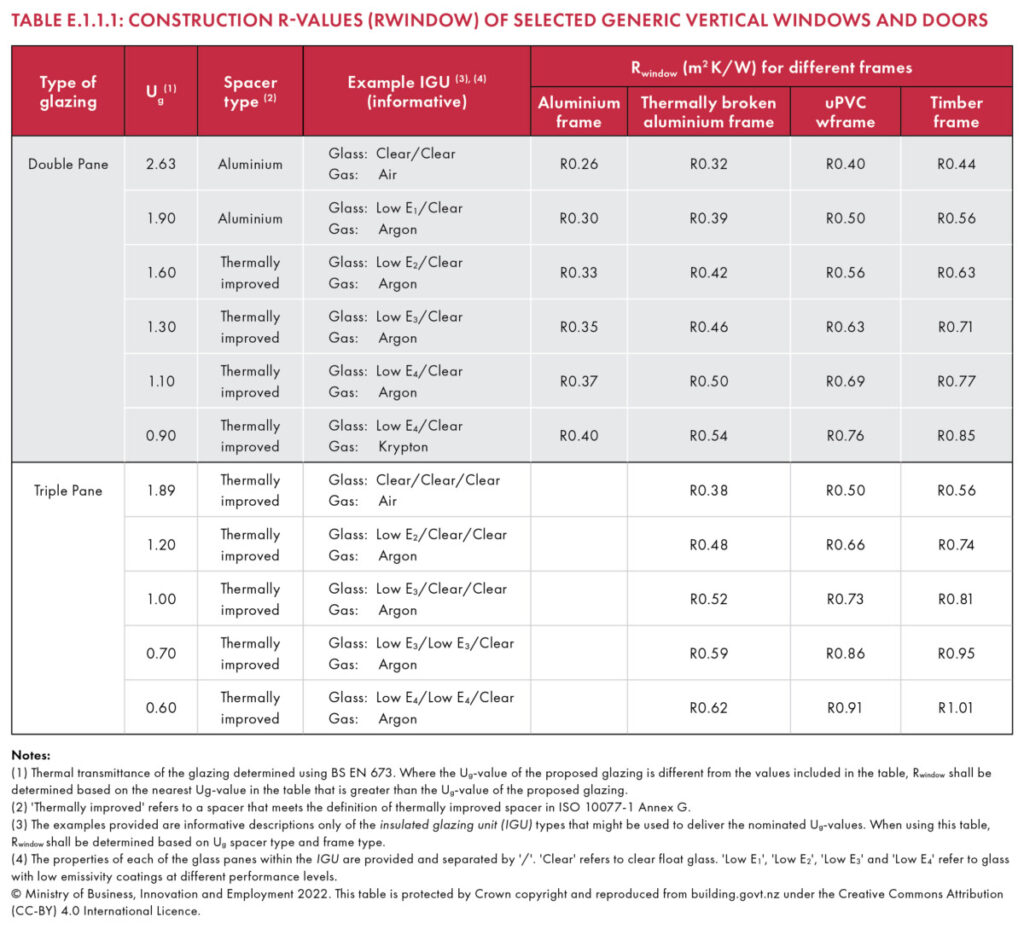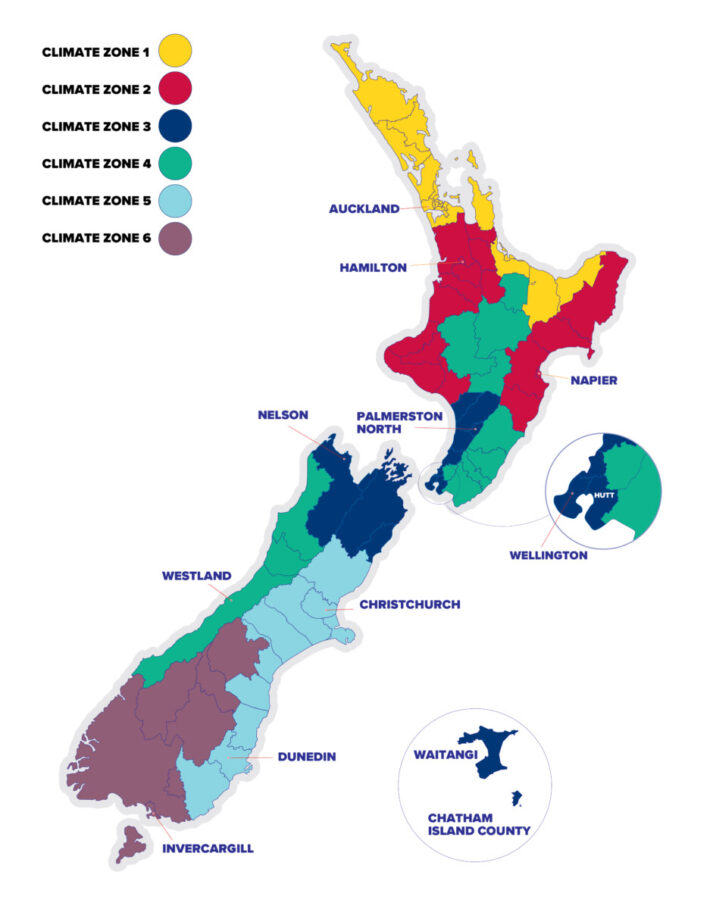H1 compliance for windows
29 Nov 2023, Learn, Prove Your Know How, Technical

Complying with the new requirements of clause H1 (the rules for thermal performance in housing in the New Zealand Building Code) for windows follows the previous process implemented in 2022 and 2023 – it’s just that the insulation values are now higher
In the future, designing homes to reduce space heating and cooling needs will likely use a modelling method to determine their designed thermal performance. This will ensure that the best choices can be made to maximise the benefits of solar gain through glazing and minimise energy and carbon used for space heating and cooling with clever design.
Modelling method will be required
While the current modelling method allows for each home to be individually designed to obtain the best performance for that home – based on location, orientation and specific design elements – the schedule and calculation methods within clause H1 are still able to be used.
The calculation method allows trade-offs between the various insulated parts of buildings and can be used for individual homes or groups of similar homes with less than 40% window-to-wall area.
The schedule method specifies the R-values that windows must meet or exceed in Table E.1.1.1 (see Table 1) and can generally be used where windows make up 30% or less of the wall area – for specific details, see clause H1. There are at least four ways to use the schedule method, which are outlined here.
All four of these approaches are implementations of the schedule method and, along with producer statements, allow you to demonstrate compliance of your window systems with the requirements of clause H1 of the Building Code.
Table E.1.1.1
The easiest way to demonstrate compliance of new exterior windows for housing with the requirements of the revised H1 (thermal performance) is using Table E.1.1.1 of H1/VM1. This allows you to look up the defined thermal performance value for a houselot of exterior joinery based on just the generic frame type and the thermal performance of the centre of glazing of the IGUs. To use this approach:
- Identify the total window R-value (Rwindow) needed for your climate zone (see map on page 26) – either R0.46 for climate zones 1–4 (the North Island and top of the South Island) or R0.50 for climate zones 5–6 (the rest of the South Island).
- Select the generic type of window/door frame from the four options of aluminium, thermally broken aluminium, timber or uPVC across the top of Table E.1.1.1.
- Identify the required centre of glazing U-value (Ug) from the 11 options in the left-hand column and find a supplier of insulating glass units (IGUs) with this performance. The Ug of the glazing units must be calculated following the requirements of EN 673, including providing the emissivity from tests completed to EN 12898. The Window & Glass Association New Zealand provides a calculator for members to use to determine this number. This method is typically used where there is a single type of exterior joinery and a single type of glazing unit and allows selection of the generic Rwindow for the houselot of exterior joinery from the table.
- If you want to use different IGUs than specified in Table E.1.1.1 or you have joinery that has had specific modelling of its thermal performance, you may want to use another approach.
Table E.1.1.1 replicator
This approach requires that the thermal performance of a specific joinery brand (Rwindow) has been modelled and the results have been verified. This information will typically be provided by a joinery supplier who does not want to rely on the default values from Table E.1.1.1. As for the use of Table E.1.1.1, this method provides the thermal performance for a typical houselot of a selected joinery brand with a particular Ug.
As this approach is an Alternative Solution, it may require verification by a building consent authority each time it is used unless it is provided by a trusted supplier or packaged within a third-party certification. This method can often provide evidence of better thermal performance than the default values of the typical houselots modelled for Table E.1.1.1.

Window Energy Efficiency Rating System (WEERS)
The WEERS process provides the actual thermal performance of the selected windows calculated using the certified process from an authorised WEERS provider. This is the most accurate
method of calculating the thermal performance of the actual joinery that is being used on your project. While it is generally accepted by all BCAs since WEERS was developed in partnership with BRANZ, the Window & Glass Association New Zealand and government, technically it also remains an Alternative Solution.
Statement of thermal performance
The fourth common method for using the schedule method is a statement of thermal performance – certification provided by the window supplier taking responsibility that its windows meet the requirement of H1. This means the supplier is responsible for using one of the previous processes or another adequately verified process and by default takes the form of the document provided by the Window & Glass Association New Zealand (see Figure 2).

This article was first published in BRANZ’s Build 198 magazine. www.buildmagazine.co.nz. Words supplied by BRANZ.
Register to earn LBP Points Sign in
6 Comments
Leave a Reply
You must be logged in to post a comment.




great
Done
good
ok then
Good stuff
damn did it again